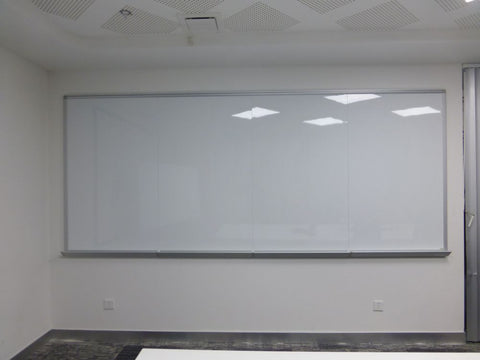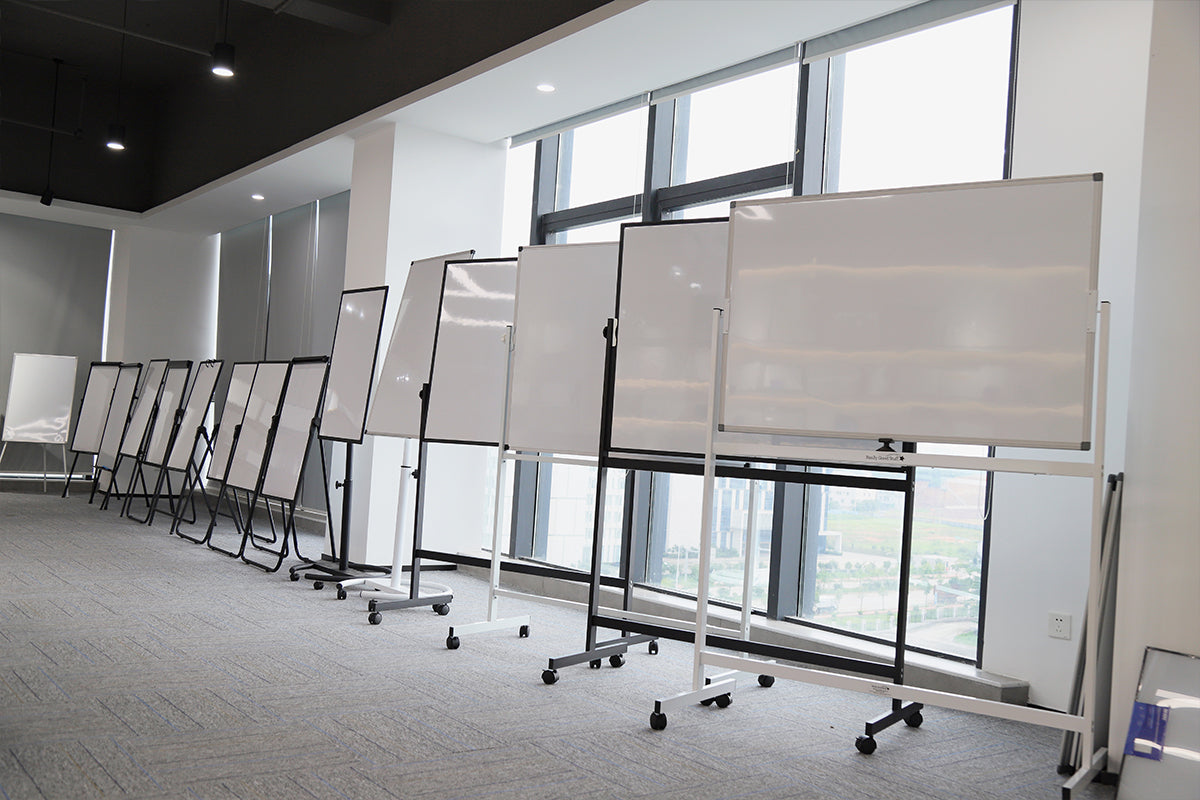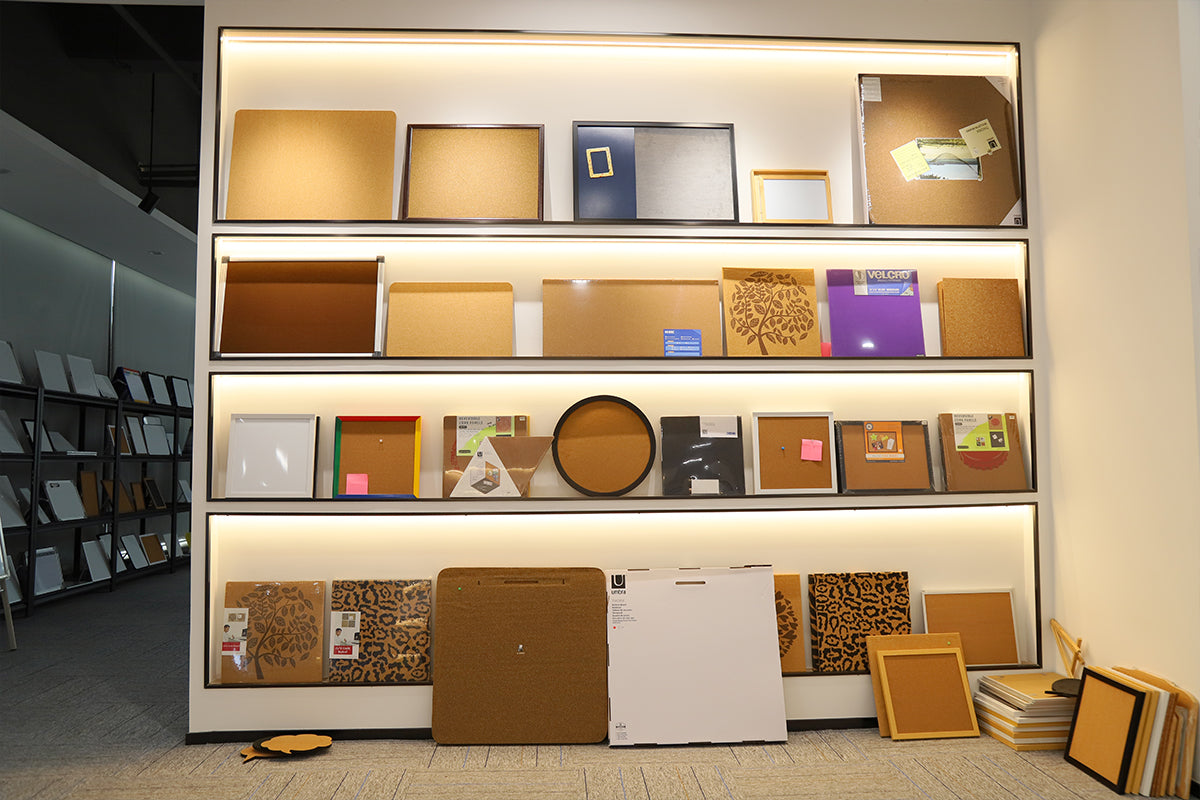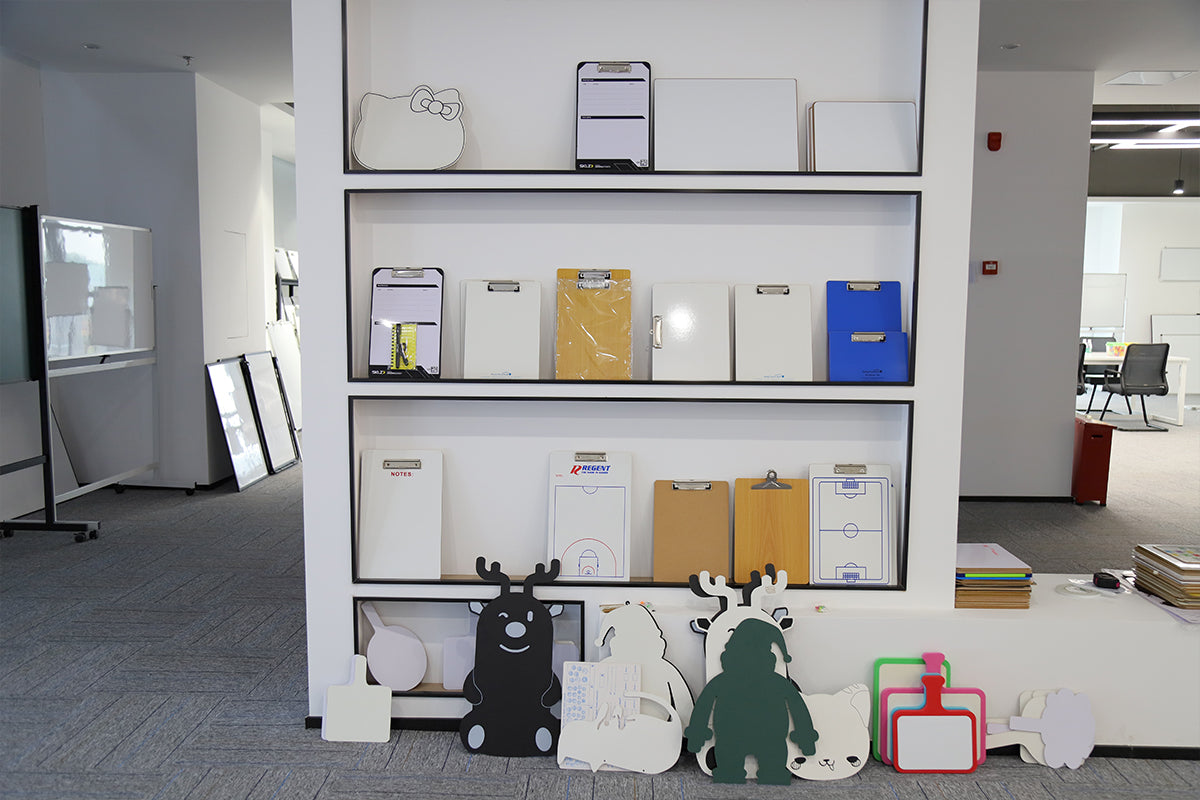New Tool for Teaching: Whiteboards For Classroom
Share
Whiteboards have become an essential tool in modern classrooms for effective teaching and learning. They have replaced the traditional blackboards and chalks, offering numerous advantages and functionalities that enhance the educational experience for both teachers and students.
 Advantages of Whiteboard Teaching:
Advantages of Whiteboard Teaching:
Interactive Learning: Whiteboards enable interactive teaching methods, allowing teachers to bring lessons to life. They can write, draw, and erase information as needed, fostering active participation and collaboration among students.
Versatility: Unlike chalkboards, whiteboards support various teaching methods, including writing, drawing.
Ease of Use: Whiteboards are user-friendly and require minimal effort to write, erase, and maintain. Teachers can quickly switch between different colored markers, highlighting important points or organizing information based on their teaching objectives.
Accessibility: Whiteboards are accessible to students of all abilities. Teachers can use large font sizes, clear illustrations, and color coding to make the content easily readable and understandable for visually impaired or differently-abled students.
Uses of Whiteboards in Classroom Teaching:
Writing and Practicing: Whiteboards serve as an excellent platform for students to practice writing, calculations, and problem-solving. Teachers can provide immediate feedback, correct mistakes, and encourage active participation during such activities.
Brainstorming Sessions: Whiteboards facilitate brainstorming sessions where students can freely share their ideas, collaborate, and solve problems as a group. Teachers can create a conducive environment for creativity and critical thinking.
Language and Vocabulary Development: Whiteboards can be used to teach new vocabulary words, sentence construction, grammar rules, and language concepts. Students can actively participate in exercises, practicing their language skills.
Importance of Whiteboard Teaching:
Enhanced Learning Experience: Whiteboards promote a positive learning environment by visualizing concepts, encouraging student involvement, and fostering interactive discussions. This leads to better information retention and understanding.
Adaptability and Personalization: Whiteboards allow teachers to adapt their teaching methods based on the needs of different students. They can adjust the pace, content, and teaching style to cater to diverse learning styles and abilities.
Organization and Structure: By using whiteboards, teachers can organize information systematically, easily referring back to previous lessons or concepts. This helps students develop a clear understanding of the subject matter.
Whiteboard teaching has revolutionized traditional classroom instruction, offering a multitude of advantages and opportunities for engagement, collaboration, and creativity. By incorporating whiteboards into their teaching methodology, educators can create a rich and interactive learning environment that facilitates effective knowledge transfer and student growth.

Interactive Learning: Whiteboards enable interactive teaching methods, allowing teachers to bring lessons to life. They can write, draw, and erase information as needed, fostering active participation and collaboration among students.
Versatility: Unlike chalkboards, whiteboards support various teaching methods, including writing, drawing.
Ease of Use: Whiteboards are user-friendly and require minimal effort to write, erase, and maintain. Teachers can quickly switch between different colored markers, highlighting important points or organizing information based on their teaching objectives.
Accessibility: Whiteboards are accessible to students of all abilities. Teachers can use large font sizes, clear illustrations, and color coding to make the content easily readable and understandable for visually impaired or differently-abled students.
Uses of Whiteboards in Classroom Teaching:
Writing and Practicing: Whiteboards serve as an excellent platform for students to practice writing, calculations, and problem-solving. Teachers can provide immediate feedback, correct mistakes, and encourage active participation during such activities.
Brainstorming Sessions: Whiteboards facilitate brainstorming sessions where students can freely share their ideas, collaborate, and solve problems as a group. Teachers can create a conducive environment for creativity and critical thinking.
Language and Vocabulary Development: Whiteboards can be used to teach new vocabulary words, sentence construction, grammar rules, and language concepts. Students can actively participate in exercises, practicing their language skills.
Importance of Whiteboard Teaching:
Enhanced Learning Experience: Whiteboards promote a positive learning environment by visualizing concepts, encouraging student involvement, and fostering interactive discussions. This leads to better information retention and understanding.
Adaptability and Personalization: Whiteboards allow teachers to adapt their teaching methods based on the needs of different students. They can adjust the pace, content, and teaching style to cater to diverse learning styles and abilities.
Organization and Structure: By using whiteboards, teachers can organize information systematically, easily referring back to previous lessons or concepts. This helps students develop a clear understanding of the subject matter.
Whiteboard teaching has revolutionized traditional classroom instruction, offering a multitude of advantages and opportunities for engagement, collaboration, and creativity. By incorporating whiteboards into their teaching methodology, educators can create a rich and interactive learning environment that facilitates effective knowledge transfer and student growth.










